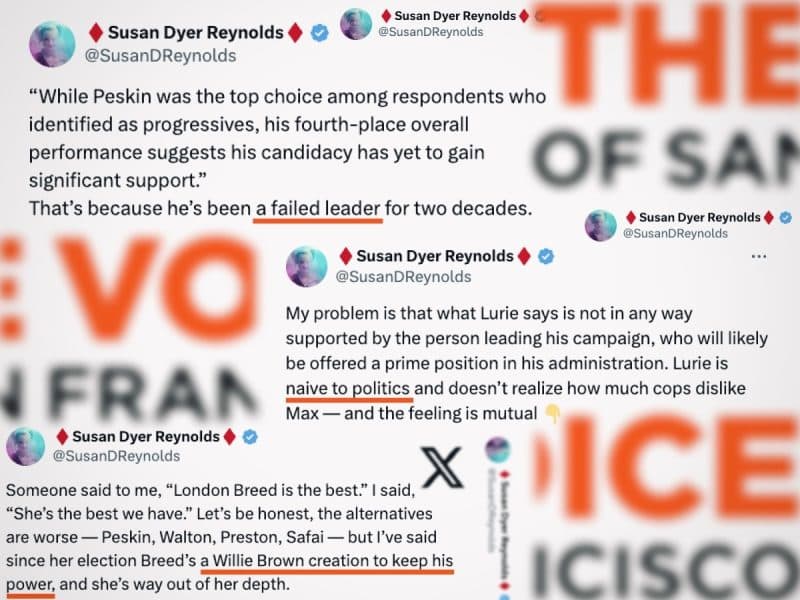Journalist Susan Dyer Reynolds Contends Unreported Crimes Skew Official Statistics

San Francisco-based journalist Susan Dyer Reynolds recently sparked discussion on social media, asserting that official crime statistics are misleading due to a lack of arrests. In a post on X, Reynolds stated, > "If an arrest isn’t made, the crime didn’t happen. That’s why “crime is down.”" This comment reflects a long-standing critique by Reynolds regarding the accuracy of crime reporting and its impact on public perception.
Reynolds, known for her critical reporting on San Francisco's urban issues, has consistently highlighted what she perceives as a significant underreporting of crimes, particularly retail theft. Her work often contrasts official data with anecdotal evidence and internal communications, suggesting a disparity between reported incidents and actual criminal activity. She frequently uses her platform to challenge narratives that portray a decline in crime rates.
For instance, Reynolds previously reported on internal police communications revealing that a single Target store in San Francisco recorded nearly 2,000 thefts totaling over $330,000 in a year, with less than one percent of these incidents officially reported. She has argued that such widespread underreporting, often due to retailers not filing formal police reports or new reporting mechanisms not being fully integrated, creates an artificially low crime rate. This, she contends, contributes to a false sense of security and misinforms policy decisions.
Her perspective contributes to a broader debate about the reliability of crime statistics and the factors influencing their collection and presentation. Critics of official crime data often point to issues like victim reluctance to report, changes in police reporting practices, and the classification of offenses as potential reasons for discrepancies between reported figures and lived experiences. Reynolds' commentary underscores concerns that a focus solely on arrest data or reported incidents might not fully capture the scope of criminal activity within a community.